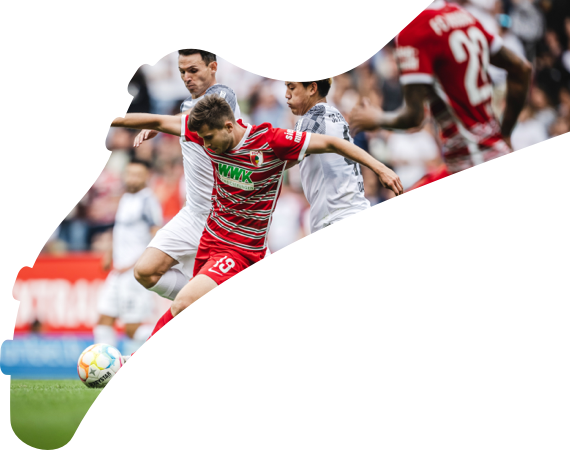Throw-in in soccer: What are the rules?
Get expert insight on the correct execution of a soccer throw-in, including information on the possibility of scoring a direct goal.
The origin of the throw-in can be traced back to an international soccer match between England and Scotland in 1882. This was before there were established rules for throw-ins, but Scotland agreed to allow throws to be taken using any technique.
Today, a soccer field has specific dimensions and is defined by boundaries. During the game, the ball often goes out of bounds. To continue the game, a player must throw the ball back onto the soccer field. In soccer, there are strict guidelines on how to properly perform a throw-in. Learn more about it here.
How to take a throw-in correctly in soccer
The referee assigns the throw-in to the opposite team that last touched the ball before it crossed the sideline. To perform a throw-in correctly according to the official rules of soccer, the player executing the throw-in must consider a few key factors:
⦁ The player taking the throw-in must be standing and facing the field of play.
⦁ Both feet must be touching the ground outside the sideline or it will result in a foul throw. It is alright if just a portion of the foot touches the sideline.
⦁ The player's position outside the sideline is not important as long as there are no obstacles between them and the sideline.
⦁ The soccer ball must be thrown over the head from behind using both hands.
⦁ The direction of the soccer throw must be upwards, throwing the ball downwards toward a teammate is not allowed.
⦁ The throw-in must be taken from the spot where the ball crossed the sideline.
⦁ All players must be at least 6.5 feet (2 meters) away from the player taking the throw-in.
⦁ The player taking the throw-in can only touch the ball again after it has been touched by another player, either from their own team or the opposing team. If they touch the ball first, the opposing team will receive an indirect free kick.
⦁ If the goalkeeper throws a ball and then uses his hand inside the penalty area, the opposing team will receive an indirect free kick.
⦁ If the ball touches the ground before re-entering the field of play, the throw-in must be taken again by the same team.
⦁ The player taking the throw-in can intentionally throw the ball at an opposing player, but they can't throw the ball carelessly, recklessly, or with excessive force.
The opposing team must also follow certain rules. If they obstruct the player from taking the throw-in, distract them, or do not maintain the required distance, they may receive a yellow card for unsportsmanlike conduct.
What is a foul throw in football?
In soccer, a foul throw-in occurs when the player who is performing the throw-in does not comply with the established rules. If the player performing the throw-in does not follow the correct procedure or throws the ball from a different location from where it went out of bounds, this is commonly referred to as a "foul throw".
This can happen if the player doesn't have both feet on the ground, or if they throw the ball downwards during the throw-in. A wrong throw-in also occurs if the player takes the throw-in from a spot that is closer to the opponent's goal instead of the spot where the ball went out, in an attempt to gain an unfair advantage.
If the referee recognizes a foul throw, possession of the ball goes to the opposing team, who will then be allowed to make a throw-in from the correct spot on the field.
The throw-in in soccer as a goal-scoring opportunity
A well-executed throw-in in soccer can result in a goal if it catches the opposing team off guard and leads to some smart play. It's important to note that on average, there are 30 to 50 throw-ins per soccer game. Knowing how to use this common aspect of the game to your advantage can give you a significant edge.
For example, Liverpool FC's head coach Jürgen Klopp hired a throw-in coach named Thomas Grønnemark in 2018. He regularly trains various other European clubs in proper throw-in technique. Grønnemark's training not only covers tactical finesse, but also includes basics such as proper hand grip and increased ball power.
With a throw distance of 164 feet (51.33 meters), Grønnemark even holds the world record for the longest-recorded throw.
H2 – Has there ever been a throw-in directly into the goal?
A throw-in restarts play and cannot result in a direct goal. If the ball goes directly into the opponent's goal after a throw-in, the referee awards a goal kick. On the other hand, if a player throws the ball directly into their own goal, the opposing team is given a corner kick.
However, there have been instances in the Bundesliga where a throw-in has led to an indirect goal. For instance, in 1982, Bayern Munich goalkeeper Jean-Marie Pfaff made his competitive debut against Werder Bremen. Bremen had a specialist in throw-ins named Uwe Reinders who was able to throw the ball near Bayern's penalty area, causing Pfaff to react awkwardly and hit the ball with the tip of his hand. The ball went over him and into the goal, resulting in Bremen's 1-0 victory.
Similarly, in 2018, Stuttgart goalkeeper Ron-Robert Zieler was beaten by a throw-in from his own teammate Borna Sosa. Zieler was adjusting his shoes at the time and was taken by surprise when the ball was thrown toward him. He tried to play it away with a tackle, but the ball bounced over his foot and into the goal. Although the goal was unlucky, it was still considered valid according to the rules.


